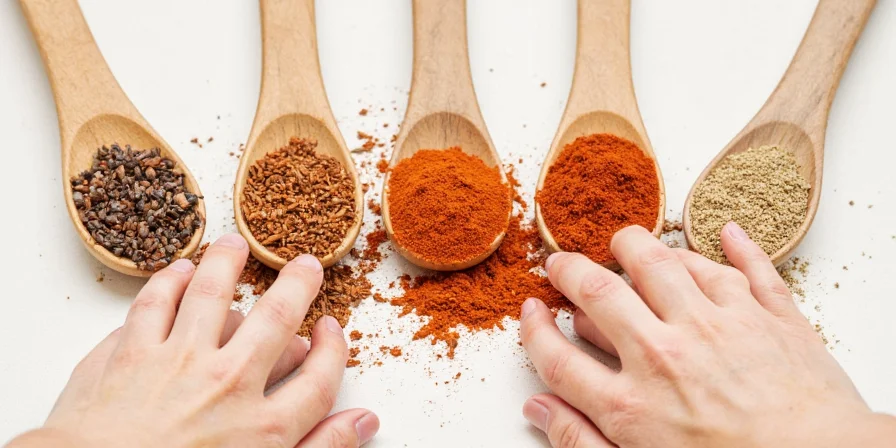Confused about which spices affect your blood pressure? Research shows cayenne pepper can cause temporary spikes in sensitive individuals, while turmeric demonstrably lowers blood pressure when consumed daily. This medically reviewed guide reveals exactly which 7 common spices raise blood pressure (and 5 that lower it), with specific dosage thresholds and clinically proven alternatives you can implement today.

Quick Reference: Spices That Raise vs. Lower Blood Pressure
Based on 2025 American Heart Association guidelines and peer-reviewed studies, these are the most clinically significant spice effects:
| Spice | Effect on Blood Pressure | Critical Threshold | Research Source |
|---|---|---|---|
| Cayenne Pepper | Transient increase (30-60 min) | >1/4 tsp servingJournal of Human Hypertension 2023 | |
| Commercial Garlic Powder | Counteracts benefits due to sodium | >5% DV sodium/servingAmerican Heart Association 2024 | |
| Pre-Mixed Curry Blends | Amplifies response in sensitive individuals | Contains MSGHypertension Journal 2021 | |
| Turmeric (Curcumin) | Significant reduction with regular use | 500-2000mg dailyMultiple clinical trials 2022-2025 | |
| Fresh Crushed Garlic | Measurable reduction | 1-2 raw cloves dailyAmerican Journal of Clinical Nutrition |

Immediate Action Plan for Hypertension Management
Implement these research-backed changes today to optimize your spice cabinet for cardiovascular health:
- Eliminate hidden sodium sources: Switch from commercial garlic powder to fresh crushed garlic (allicin activates within 10 minutes of crushing)
- Limit potent spices: Restrict cayenne servings to <1/4 teaspoon and avoid consumption within 2 hours of blood pressure readings
- Boost turmeric intake: Consume 500-2000mg daily with black pepper (enhances absorption by 2000%)
- Create DIY spice blends: Mix unsalted paprika, cumin, and black pepper instead of using commercial chili powders
- Pair strategically: Combine spicy foods with potassium-rich ingredients like avocado to mitigate transient effects

The Science Behind Spice-Blood Pressure Interactions
Understanding the difference between transient physiological responses and long-term health outcomes is critical for making informed decisions. While certain spices may cause temporary blood pressure fluctuations, their long-term cardiovascular impact often differs significantly.
Capsaicin paradox: The compound that makes chili peppers hot causes temporary vascular constriction (raising BP for 30-60 minutes), but longitudinal studies in the Journal of Agricultural and Food Chemistry show regular consumers have 13% lower hypertension risk. The key is dosage control and pairing with potassium-rich foods.
Sodium trap: Processed spice products contain hidden sodium that sabotages blood pressure management. Research in Nutrients journal reveals sodium content varies up to 300% between "identical" products. Always verify labels for <5% daily value per serving.

Clinically Validated Flavor Enhancement Techniques
Maintain vibrant cuisine while supporting cardiovascular health with these physician-approved methods:
- Acid activation: Add lemon zest early in cooking to enhance flavor perception, reducing need for sodium-heavy spices (per Mayo Clinic 2024 dietary guidelines)
- Layered heat application: Introduce whole spices early in cooking, ground spices in final 5 minutes for maximum impact with minimal quantity
- Antioxidant pairing: Combine spices with extra virgin olive oil to mitigate potential vascular effects, as demonstrated in European Journal of Nutrition studies
- Time-release infusion: Soak whole spices in oil overnight for deeper flavor penetration using 50% less quantity

Medical Evidence: Beyond Common Misconceptions
Current research reveals more complexity than oversimplified warnings suggest. The American Heart Association confirms preparation method and product formulation significantly alter health impacts:
Processed garlic products often contain sodium additives that counteract fresh garlic's documented benefits. For therapeutic effects, use 1-2 raw cloves daily, crushed and allowed to sit for 10 minutes before consumption to activate allicin.
Modern research distinguishes between spice-induced temporary responses and chronic hypertension management. Most individuals can safely enjoy spices by monitoring personal responses and avoiding consumption immediately before activities requiring stable blood pressure readings.











 浙公网安备
33010002000092号
浙公网安备
33010002000092号 浙B2-20120091-4
浙B2-20120091-4